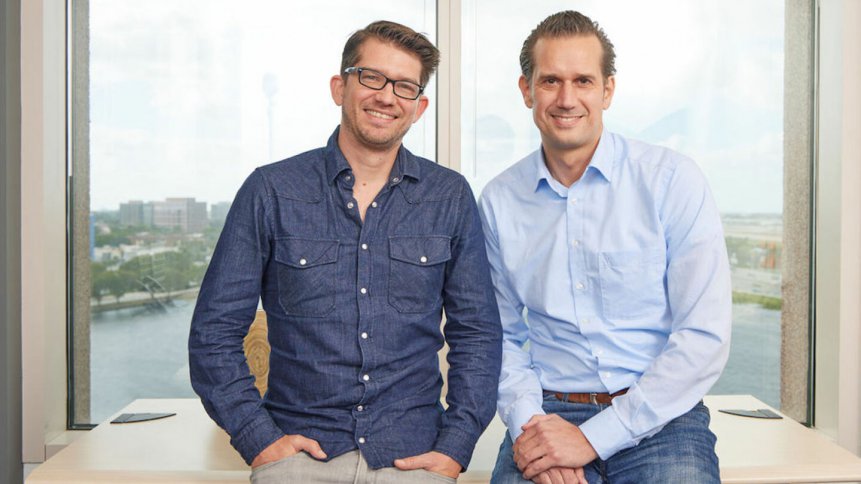DaaS in Action: Talking with Everphone

Traditionally, businesses have gained some sense of their own permanence by owning their assets, from buildings to branded pens. But we’re not in a traditional era anymore. The whole nature of work has been shifted sideways by the phenomenon of remote work, and that has had an impact on whole business models. In the wake of that transition, models like Bring Your Own Device, Choose Your Own Device, and most significantly, Device as a Service have been growing ever more popular. We spoke to Tillman Schwabe, General Manager of DaaS specialist, Everphone US, to find out why the model is becoming so popular.
The Importance of a Device Management Platform
THQ: Let’s start with the basics. Why is it important these days for businesses to use a device management platform?
TS: What we’re seeing in the marketplace today is that many companies are struggling with handling the device lifecycle management themselves. So by outsourcing that function, they can save cost, they can save workload, because their IT departments get relieved of what is mostly a new function for them, and the whole process becomes more professional since they’re using a company that specializes in this, does it every day, and is expert in delivering that function.
It also incentivizes the employees, because the functions are streamlined – it’s easier for a DaaS provider to offer a multitude of devices to a company’s employees, whereas before, when IT departments were so bogged down with just handling the basics, they could only offer the basics to the employee, so those three things – cost, workload, and diversity of choice – make a big difference when you use a DaaS provider.
And then of course there’s the ecological element – within our framework, the whole lifecycle is optimized. At the end of the devices’ lifecycle, they get refurbished, the data fully wiped, and while they don’t return to the same company, they can still have a useful life in a different company. Some companies are just stacking those devices away in a device locker, which helps neither the environment, the employees, nor their bottom line. So it’s a virtual cycle to find a partner that’s capable of handling the process – and if, like us, they can recycle devices and give them a second life, that’s good for the environment too.
No Questions Asked
THQ: So what happens when a remote staff member’s using a device, they trip, and the device smashes on the ground? They contact their IT department, the IT department contacts you?
TS: Intuitively, you’d think so, but it’s actually more straightforward than that. In companies that manage their devices in-house, there are lots of headaches when it comes to replacing or upgrading devices – and again, they’ll usually want to keep the devices on offer in a CYOD model to a basic level, to try and minimize those headaches.
In our model, the IT department gets relieved of the task of managing replacements and upgrades. The employee contacts us directly through our web portal, they request a replacement in case of breakage, and we send it out, no questions asked. Then the employee has two weeks to return the broken device to us. That way, the amount of time the employee is without a device is minimized – again, that’s part of the point of using a DaaS provider, making sure employees have the devices they need with as little downtime as possible, without giving the IT department the headache of sourcing and authorizing replacements, which would likely have a much slower turnaround.
The same is true when it comes to upgrades – it’s just a different button in our portal. When it comes to downtime, it usually depends on geography and the speed at which FedEx works. On the east coast, we can get employees their new devices within one business day. Seattle, Anchorage, you might be looking at 2-3 business days, but what we can also do in the case of emergencies is establish a depot solution, where we have a certain number of devices on premises, to cut out even the FedEx delay.
The Cybersecurity Question
THQ: Given that everyone is now focusing on cybersecurity, particularly when it comes to remote workers and their devices, is there a standard suite of cybersecurity that comes with the devices Everphone supplies, or is that determined case-by-case by the companies to which you supply the devices?
TS: It’s done on a case-by-case basis, because every customer has very specific and sometimes very different needs on cybersecurity – an accounting firm will have very different needs to an oil platform. We work very closely with the IT department at the beginning to ensure the devices we supply are at the right level for the company and the employees, so there’s no standard model – it’s a much more bespoke process than that.
THQ: So, once it’s up and running, the ethos is not to add workload to the IT department, but at least at the start, that guiding hand on the direction is worked out specifically with the IT department, so it’s not just a one-size-fits-all solution applied to a very specific set of needs.
TS: Exactly. The process is defined by the IT department, and we work with them at that point, because otherwise it wouldn’t really be removing headaches from them down the line.
The Paradigm Shift
THQ: Are you seeing a shift in the marketplace, with companies coming to you needing more ruggedized devices or more cyber-secure devices?
TS: Not really. What we are seeing is a growing understanding of what a mobile device management platform can do for them. There are lots of companies – even in the public sector – that are still handling their device management in-house, and the paradigm shift we’re witnessing seems to be an awakening that it doesn’t have to be that hard, and that DaaS providers can do the job they’re trying to add on to their responsibilities, but they can do it faster, at a higher service level, and remove the headaches from the IT department.
Having companies out there that are demonstrating DaaS as a successful, stress-reducing model seems to be waking companies up to that possibility, and making more of them make the move.
The Regeneration of a Device
THQ: Everphone talks a lot about its recycling and refurbishment policy, extending the useful lifecycle of devices. How important is that? Is it chiefly an economic element or an ecological element? Bottom line vital, or Just A Good Thing To Do?
TS: It’s both. It’s an essential piece of our business model. When a corporation says a device can’t be used anymore, for a smartphone that’s usually 24 months. But the devices are far from being unusable, it’s just a matter of refurbishing them. And there’s a substantial value that the devices still hold. By refurbishing those devices, we can contribute to the circular economy and double their lifespan. That way we reduce the total emission for the device, but it’s also an economic factor, because with refurbishment, there’s more value to be pulled from existing devices than a single 24-month lifespan would give you.
THQ: What’s the take-up like from staff of these refurbished devices? In the civilian world, people tend to think they’re locked into this upgrade cycle, so if you offered them, say, a 24-month old smartphone, they wouldn’t see that as a perk.
TS: Interestingly, we’re seeing a trend where companies don’t return their devices after 24 months, they naturally extend their lifecycle to say 27-30 months, because usually with business devices, there’s less of a drive towards that competitive upgrade cycle.
And there’s a substantial market for refurbished devices, because of course there’s a substantial cost reduction to the company in devices that are about to begin their ‘second’ lifecycle. The devices don’t go back to the same company for their second lifecycle, they go to companies who are looking for those cost reductions, who also understand there’s nothing ‘wrong’ with refurbished devices, and that they still hold a lot of their functional value.
The Data Deletion Standard
THQ: Before refurbished phones can be passed on to another company of course, everyone has to be certain that they’re data-free for the purposes of cybersecurity. What’s the standard of data cleansing you use?
TS: We use a gold standard data deletion process that’s accredited by the likes of NATO, so companies can be absolutely certain that their data’s not being passed on into the device’s second lifecycle. The software’s called Blancco, and each customer gets a data deletion certificate at the end of the process, so whenever they have an audit, they can prove that their data was comprehensively deleted.
THQ: Are we moving more towards a DaaS model generally, or is it still an outlier in the way companies work?
TS: We’re seeing more of a shift towards hybrid and remote working, and that brings more challenges, both in cybersecurity and operational terms. That means we’re seeing more companies adopting the DaaS model, because it alleviates pressure from IT departments who already have the work to do that they had in the pre-hybrid world. So companies are looking to both relieve the burden of additional functions on their IT departments, and to improve the service level of their device management function, and DaaS is a good way to achieve both of those goals.
As the trend towards hybrid and remote work continues, the case for businesses adopting the DaaS model is likely to intensify. The question will likely be whether companies can afford to outsource their device management in the face of an oncoming recession. But as a straightforward response to the challenges of remote device management, DaaS is very probably the way of the future.










